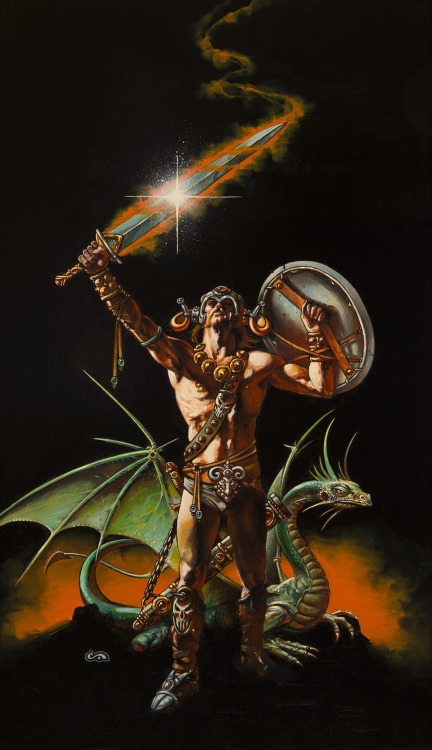If you DM a more recent edition of D&D and have looked around online for some advice on making dungeons, chances are you came across the Five Room Dungeon Method. There are a lot of places online that explain what this is, so I'm not going to elaborate it here. What you need to know is that the 5RDM is an outline for creating adventures (not just dungeons) that focuses on five key elements:
- Entrance and guardian
- Puzzle or role-play challenge
- Trick or setback
- Climax
- Reward or twist
All of these are pretty self-explanatory, especially to anyone that's played D&D for a while. This sort of adventure-making method works better for more linear, narrative-oriented play, but it's too prescriptive, it makes too many assumptions about player decisions, and it promotes fixed outcomes, so it doesn't fit the OSR sensibility. But I'll be damned if it isn't intuitive.
Anyway, I was playing around with it the other day to see if I could squeeze out a one-shot and I ended up having a much better idea: using the Five Room Dungeon to generate dungeons.
And yes I know it's already a "dungeon generator" but I mean in the classic "Dungeon Room Contents" sense.
Instead of using this:
how about this:
1-2: Guardian
3-4: Puzzle/RP challenge
5-6: Trick/Setback
7: Climax
8: Reward
9-12: Empty
Add treasure as you see fit, or give a 2-in-6 chance of treasure for the first 3 entries a 1-in-6 chance for empty rooms.
***
Here's how the table works: instead of using each entry as the 5RDM intends, think about what they represent. Guardians prevent players from continuing until they are surpassed. Tricks and setbacks tax resources and punish carelessness. Climaxes and rewards are the reasons that the players/PCs care about the dungeon.
When you read the B/X room contents table, what you get is exactly what it says on the tin. A monster means there's a monster there. A trap is a trap. A Special is... well, you get the idea. Conversely, the 5RDM room content table proposes the purpose of each room.
A Guardian represents some challenge that, when surpassed, opens up new parts of the dungeon. Guardians could be monsters guarding a room, but they could also be a magic door that requires a special ritual to open, a portcullis and a conspicuously trapped lever, or a flooded passage that's too deep to wade through.
Puzzles and role play challenges encompass obstacles that aren't explicitly hostile to the characters. They can be puzzles in the traditional sense, non-hostile NPC or monster encounters, challenges that force hard decisions on the players, and obstacles that involve aspects of the characters' identities (alignment, faction affiliation, class, etc.).
Tricks and setbacks are rather self-explanatory: traps, resource-depleting hazards (torch-extinguishing wind, spooky noises that force a morale check for hirelings), difficult terrain, etc. These rooms are where players' caution and preparedness is tested and where inattention and negligence is punished.
Climaxes in the 5RDM sense are the least fit to be in old-school dungeons, so instead consider them as rooms that contain important things related to the world outside the dungeon. Or, simply consider them as major locations of the dungeon itself. A climax room is where the dragon sleeps atop its immense hoard, or where the mystic sage the players want to consult resides, or where the fountain that can cure the duke's disease is found. Climax rooms can also be focal points of the dungeon, with dynamic elements that can be interacted with by the players. Maybe this room is the control center that can monitor other rooms of the dungeon and activate all the traps on the floor, or maybe it's the central chamber where an ancient demon imprisoned in a giant iron cage (which is perhaps why the dungeon was built up around it)...
Rewards: you can probably guess. Aside from treasure there are some other things this entry means: Information is the most valuable resource in the game, and players love having good relationships with NPCS.
***
Why choose this room content table over another one? It invites you to design the dungeon conceptually while you're constructing it. And not "conceptually" in regard to the dungeons theme or origin, but "conceptually" from a game design perspective. Instead of having each result on contents table be its own discrete thing that you're meant to find a justification for later, the 5RDM contents table more easily works out the "flow" of the dungeon as your generating it.
Because each entry of the 5RDM contents table is broad while still being meaningfully distinct from one another, you can easily connect the contents of different rooms together intuitively. If a guardian and a trick/setback room are right next to each other, the guardian can be an orc monitoring a corridor while the setback can be two more preparing an ambush. Or, it could be a locked door that leads to a room filled with poison gas. Classic generators don't offer this sort of flexibility.
What about this contents table might be worse than other ones? Well the biggest thing is it that needs you to make more decisions, so it's more work to use this table than the B/X or AD&D tables. And since you're relying more on your own ideas, your dungeons might get stale with repeated use.
With all that being said, think about giving the 5RDM contents table a spin if you're tired of the old generators and want to try something new. Have fun with it.
















